HFA Audio Setup History 33 – Invaluable Advice – 2021-2024
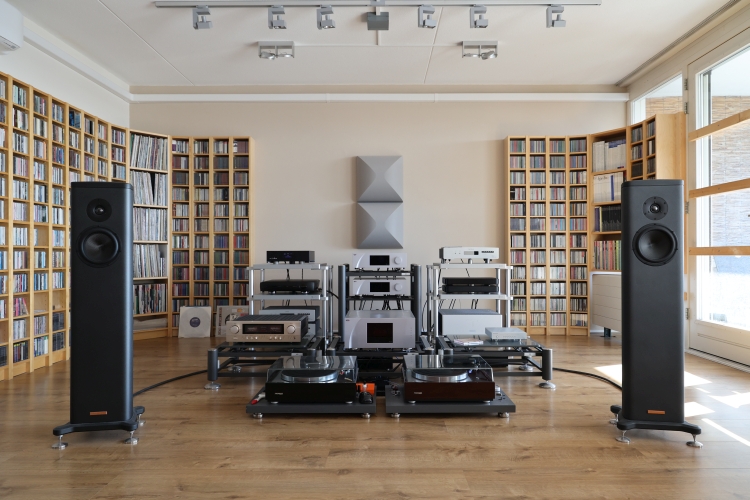
Now that the room was behaving differently, it dictated a new location for the RTFS Big Blocks.
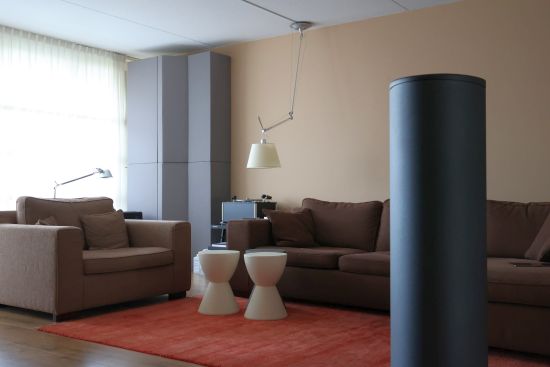
After much experimentation, I found that the corner diagonally opposing the front left corner had the largest negative influence, so I maximized the Big Block coverage in that corner.
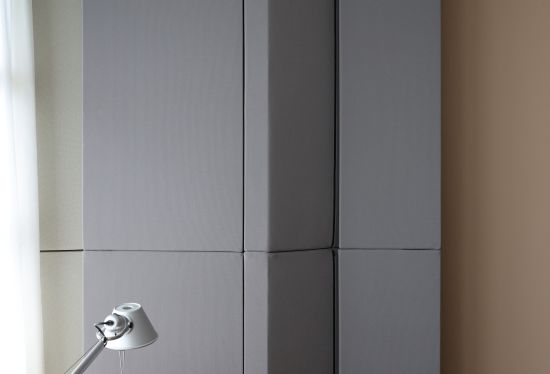
The window treatments, CD/LP/magazine racks, and RTFS Big Blocks had truly transformed the sound of this room. The bass was much cleaner and more forceful, and the entire presentation was much more linear, balanced, and transparent.
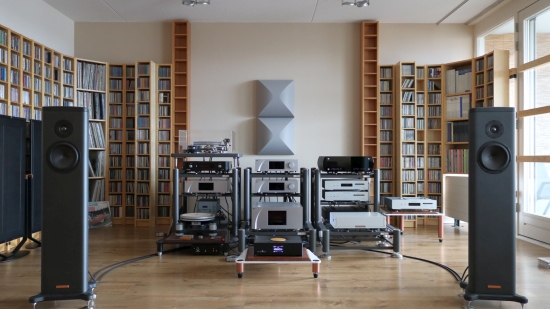
Then, my father (George Boonstra, who made the large abstract paintings in my rooms) mentioned during a visit that it would probably look much nicer if all the racks extended to the ceiling. I did not want to entertain that idea as I knew how much work it would incur, but he was right.
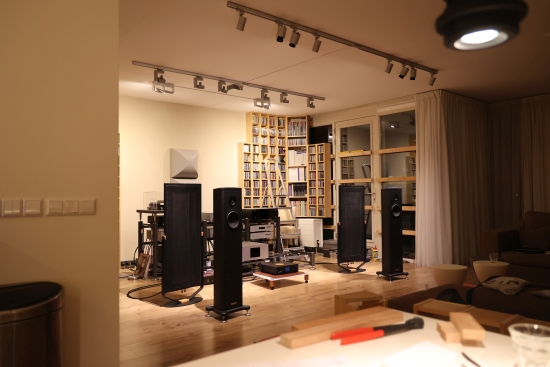
Once again, I went off to score second-hand Billy/Benno CD racks. Fortunately, these were apparently “sold by the millions” and were easy to find. Apparently, I have a middling taste, as the color I needed (beech wood) was the most readily available of all the options.
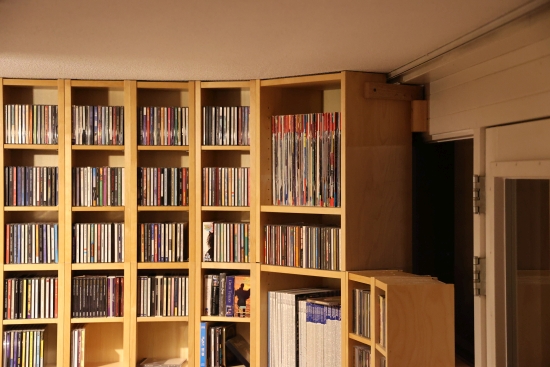
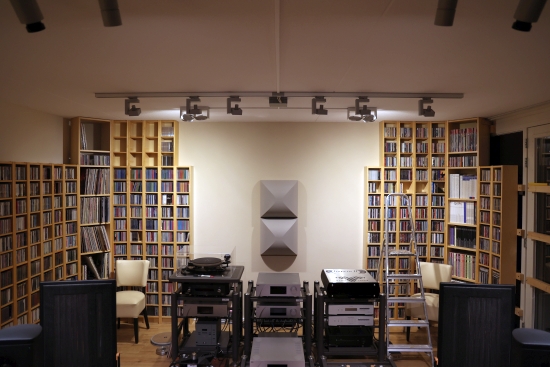
Yup, you can already see the effect building up.
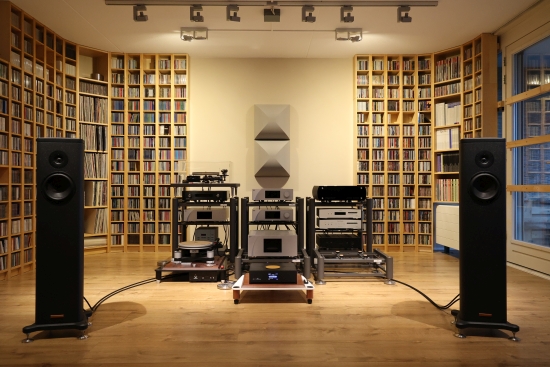
Oh, yes, this looked fantastic!
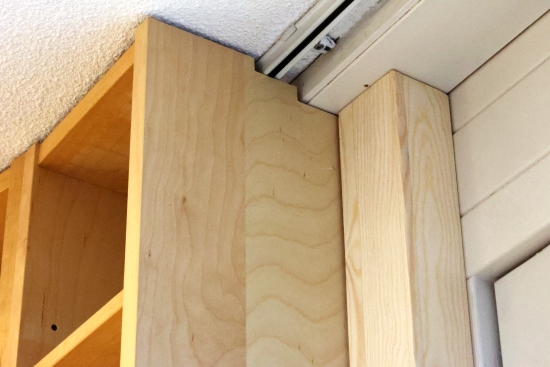
Still wearing my working cap and without having spent any time listening to the system, I proceeded with the finishing touches to work around obstructions, hide the carrying structure, and make it all top-notch.
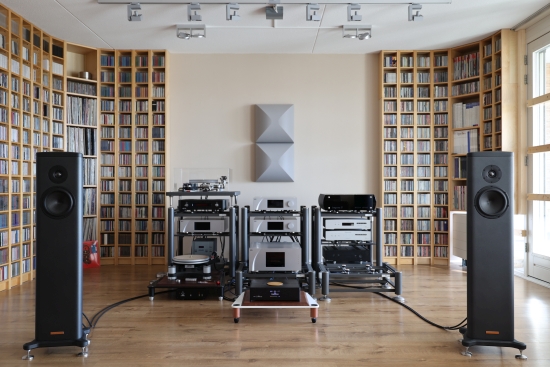
The result made me really happy until the first listening session with a friend, during which I found the sound muffled, dark, compacted, and lacking sparkle.
Oh no… was this really caused by the extensions?
I started pulling CDs from the top levels, and sure enough, my friend confirmed that the spirit and expression slowly returned. I had a tiny sparkle of hope that the middle section could remain (for visual purposes) and that I could perhaps suffice to remove the extra section on the left-hand side. But that did not work at all. In fact, the side wall covering was mainly beneficial.
We also removed all the CD racks again to ensure that my initial solution was still correct. Sure enough, the bare wall added boominess and muddiness once again, so the racks were quickly reinstated. It was precisely the visually nice middle-top sections that spoiled the fun. The problem was reduced significantly after removing the CDs, but the improvement was the largest when the cabinet extensions were removed.
To this day, I still find this strange, as the speakers are positioned nearly halfway across the room, and the rear wall is 3 meters behind the speakers. So, how could the rear wall possibly make the sound so dull? But it sure did, and all the extensions had to go.
That was quite a depressing moment.
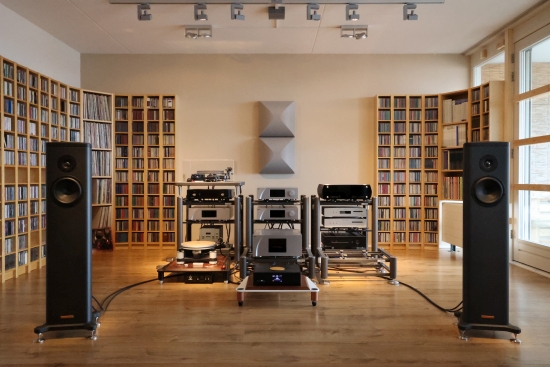
When I returned to the situation as it was before extending the racks, the sound was great again, but it took me quite some time to agree with the visual aspect. Now, the 200-cm rack height seemed strangely curtailed to me.
After optimizing the room acoustics, the main system remained relatively stable for a longer period. This freed up time to address other issues, such as enlarging the available space for the work desk in the kitchen.
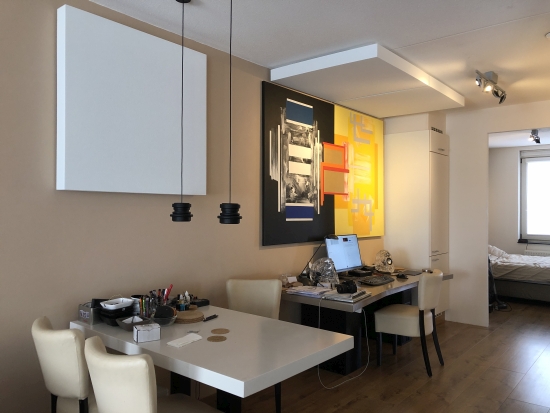
It’s unclear from this picture, but the desk is sandwiched between the dining table on the left and the built-in fridge on the right. With the kitchen work area on the right, I had to keep the desk depth to a minimum, and I could not really fit a better chair.
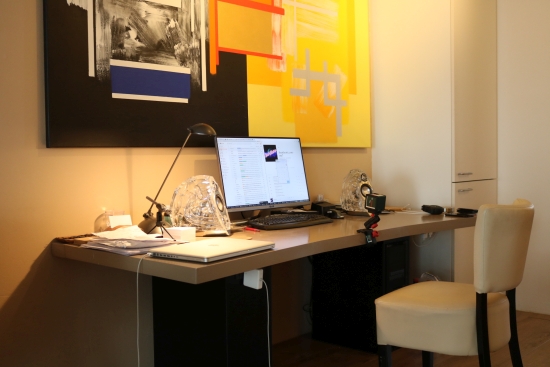
It looks cozy, but I had grown tired of this work location because of the long work hours each day and the lack of direct outside light.
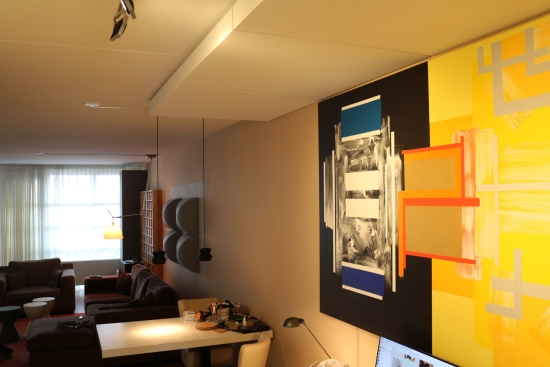
Because there was nowhere else to move the desk to, I had no choice but to keep it in the kitchen.
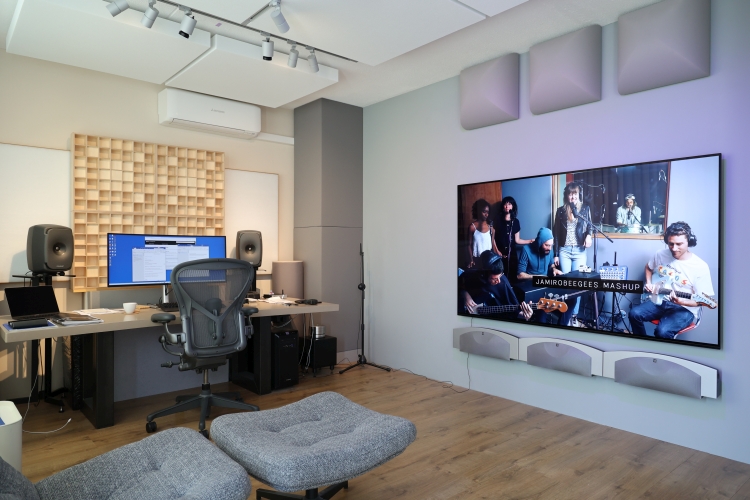
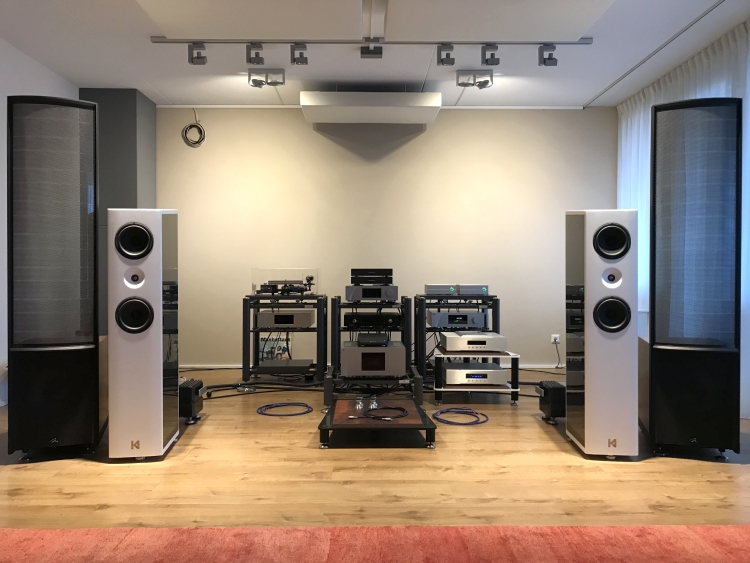
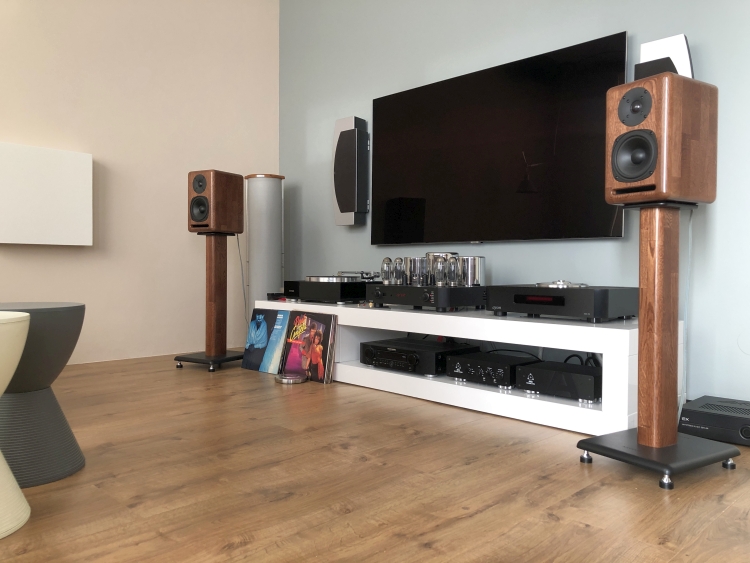
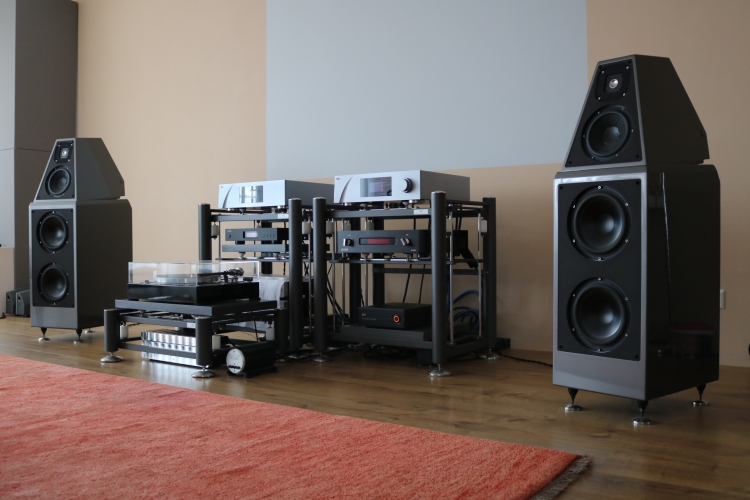
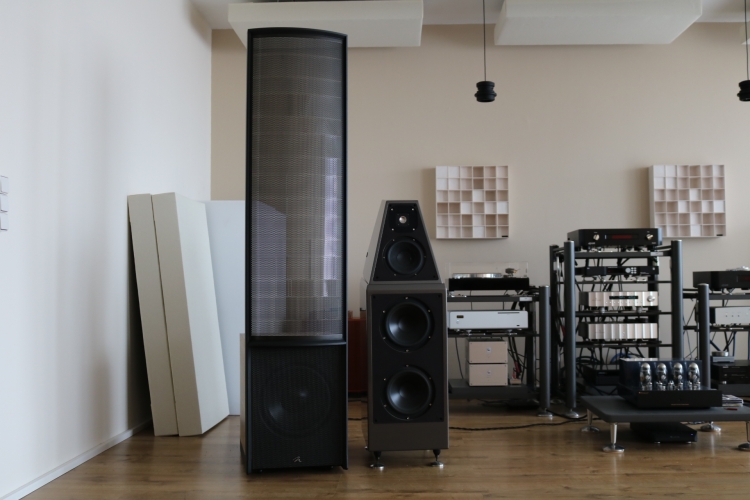
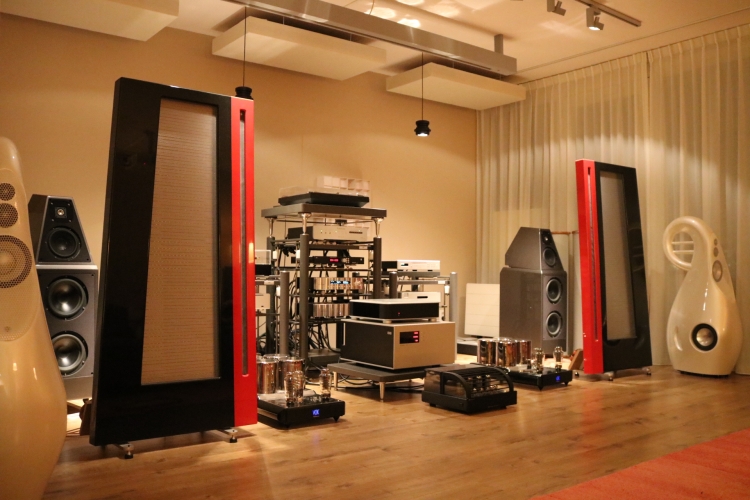
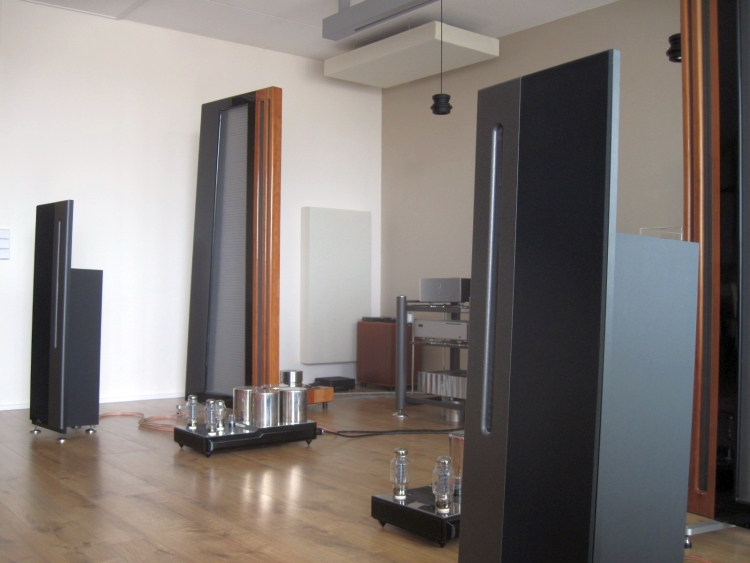
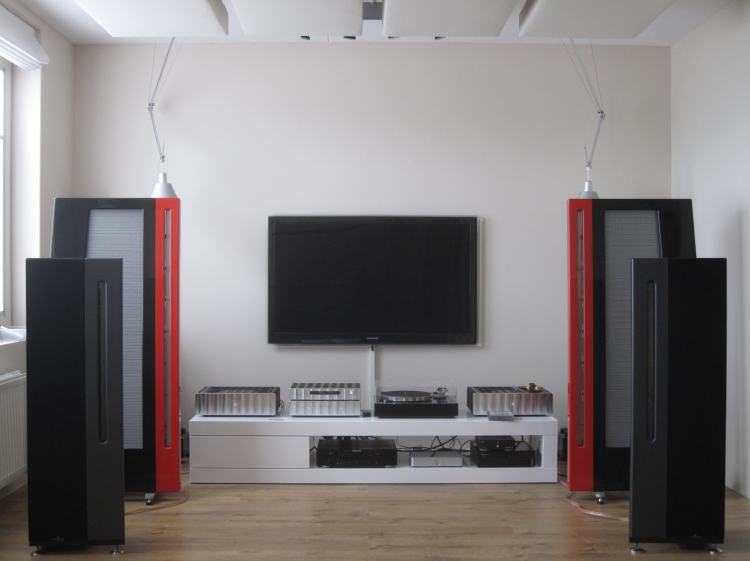
Damn interesting Christiaan. Specially so, because fate turned against us and we got our house on fire. Literally. So my listening room got lost ans all devices in it. To give you an idea: Mola Mola KUla, Grimm MU1, REL Carbon special and Diptyque DP-160’s and of course some quality electronics, cables, acoustic measures and the like.
We temporally live in another house. Recovery will take months , perhaps even a year.,
Means that I have start from scratch. Having learned a lot the past few years concerning acoustics, synergy of components. So I could do with some advice on the different aspects. Starting with working on the acoustic quality of the room. It soon will be stripped so that the bare walls of what once was a garage (later extended a bit) will be visible and form the start.
My question: where/how to start? Acoustics, components , pitfalls and tips …anything.
I’d be most grateful!
Greetz,
Henk (Venlo)
Hi Henk, nice to hear you find it interesting! Alas, these things are so hard to predict and so utterly situation-dependent that I can’t provide much in the way of meaningful tips beyond what I mentioned in this report and other articles on this site. But one general rule (although not sacred) is that it is good to strive for left/right symmetry. Left/Right walls should ideally be identical in terms of material and objects. So, ideally two hard walls. If you have one hard wall and one glass area (as I have), you’re going to be in for a lot of trouble. Square rooms are also to be avoided as the main single resonance mode will overrule and be very hard, if not impossible, to cure. Other than this, I’m afraid it is a matter of trial and error. Of course, I am no acoustical expert, and you might get better input from people who studied for this.
Thanks Christiaan, perhaps a good idea tot first contact an acoustician
Have a great summer!
Henk